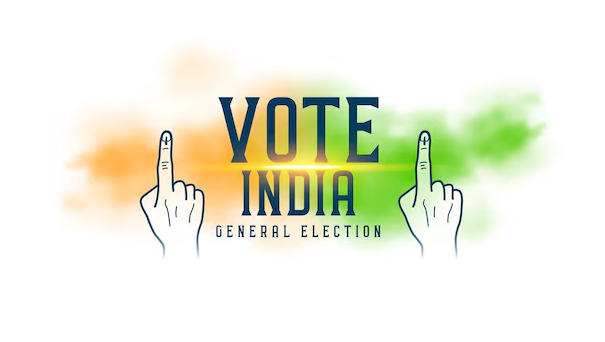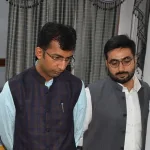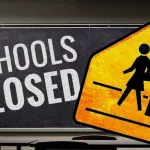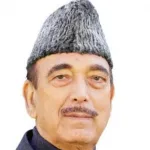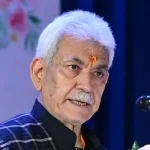Voter behavior is influenced by the evolving political landscape and the perceived momentum of parties
Indian elections are a spectacle of democracy, characterized by an intricate web of narratives that shift dynamically after each phase of voting. This phenomenon is driven by a myriad of factors, including regional diversity, strategic adjustments by political parties, voter behavior, media influence, and the emergence of local issues. This write-up will delve into why and how these narratives change after every phase, particularly focusing on the recent shifts from the ruling coalition’s “Ab Ki Baar, Chaar Sau Paar” slogan to the counter-narratives about appeasement politics and constitutional concerns.
India’s vast geographical and cultural diversity means that each region has its own unique set of issues and priorities. As the election moves from one phase to another, the focus naturally shifts to the concerns of the areas currently voting. For example, agrarian issues might dominate the narrative in rural Uttar Pradesh, while industrial development could be the primary concern in Maharashtra.
This regional specificity necessitates that political parties and media adjust their narratives to address the immediate concerns of voters in each phase. Consequently, the narrative that worked in one phase might not resonate in another due to different local priorities and issues. Political parties continuously tweak their strategies based on the feedback and results from previous phases. Indian elections are often conducted in multiple phases to ensure security and logistical efficiency.
This phased approach allows parties to analyze voter turnout, sentiment, and performance, thereby enabling them to recalibrate their strategies for subsequent phases. In the recent elections, the ruling coalition began with a strong, singular narrative of “Ab Ki Baar, Chaar Sau Paar,” projecting confidence in securing over 400 seats. However, after the first phase, the opposition’s narrative around the dangers of constitutional changes under the ruling party gained traction. In response, the ruling party shifted its focus to counter the opposition’s claims of appeasement politics and threats to the constitution, demonstrating how strategic adjustments are made in real-time based on the evolving electoral landscape.
Voter behavior is influenced by the evolving political landscape and the perceived momentum of parties. Early phases can set the tone and influence the narrative for subsequent phases. A strong performance by a party in the initial phases can create a bandwagon effect, influencing undecided voters to support the perceived frontrunner.
Moreover, exit polls and early results from initial phases provide a snapshot of voter sentiment, which can shift the narrative significantly. If a party is seen gaining momentum, media coverage and public discourse will reflect this, potentially swaying voters in later phases towards the surging party.
In this election cycle, the initial phases saw the ruling party’s confidence-boosting slogan “Ab Ki Baar, Chaar Sau Paar.” However, as the opposition’s narrative about the ruling party potentially changing the constitution and their focus on appeasement politics started resonating, the voter sentiment and focus began to shift. This demonstrates the fluid nature of voter behavior and how it impacts the ongoing narrative.
The media plays a crucial role in shaping and reshaping election narratives. News coverage, debates, and political analyses are tailored to reflect the immediate context of the election phase. Sensational stories, major gaffes, or significant policy announcements can dominate the news cycle, influencing the narrative.
In the age of social media, the rapid dissemination of information and real-time reactions further amplify the dynamic nature of election narratives. Viral trends, hashtags, and social media campaigns can quickly shift public perception and focus, necessitating continuous adaptation by political players.
The recent shift in narrative from “Ab Ki Baar, Chaar Sau Paar” to countering the opposition’s claims about constitutional threats and appeasement politics was significantly driven by media coverage. As the opposition’s concerns gained media attention, the ruling coalition had to adapt its narrative to address these issues and regain control of the electoral discourse.
As the election progresses, new issues can emerge, altering the narrative landscape. Natural disasters, economic developments, or international incidents can become focal points, demanding immediate response from political leaders. The narrative thus evolves to incorporate these new dimensions, ensuring that it remains relevant to the current context.
For example, a sudden economic downturn or a major policy announcement by the central government can shift the election discourse from local to national issues. Political parties must then respond to these developments, recalibrating their narratives to address the evolving concerns of the electorate.
In the current election, the emergence of the opposition’s narrative regarding constitutional changes if the ruling party remains in power created a significant shift. This issue demanded immediate attention and response, thereby altering the narrative focus from the ruling coalition’s initial confidence to addressing constitutional concerns and appeasement politics.
In India’s multi-party system, coalition dynamics and alliances play a pivotal role in shaping election narratives. The performance of coalition partners in early phases can influence the strategies and narratives of allied parties in subsequent phases. Successful alliances can bolster a party’s narrative, while fractious relationships can lead to a narrative of instability and discord.
Additionally, last-minute alliances or the breaking of existing ones can significantly alter the political landscape, leading to a recalibration of narratives to reflect these new realities. The performance and appeal of individual candidates also affect election narratives. Strong local candidates can drive specific issues to the forefront, while high-profile contests can draw national attention. As different phases feature different sets of candidates, the narrative shifts to highlight their strengths, weaknesses, and the key issues they champion.
High-profile leaders often campaign across multiple phases, and their speeches and campaign strategies can evolve based on feedback from earlier phases. Their changing rhetoric and promises contribute to the evolving narrative.
Election phases serve as feedback loops for both voters and parties. Voters in later phases are influenced by the outcomes and performances in earlier phases, while parties receive real-time feedback on their campaign effectiveness. This iterative process leads to continuous narrative adjustment.
For instance, voter turnout patterns, demographic data, and polling booth feedback provide parties with valuable insights. If a particular community’s support is lower than expected, parties might intensify their outreach efforts in subsequent phases, altering their narrative to better appeal to that demographic.
Opinion polls and surveys conducted between phases play a significant role in shaping the narrative. These polls provide snapshots of voter intentions and can sway public opinion. Favorable polls can boost a party’s confidence and narrative, while unfavorable ones can prompt a strategic shift. Poll results are extensively covered by the media, creating a feedback loop that influences voter perceptions and party strategies. As parties respond to poll data, the narrative evolves to reflect new priorities and tactics.
Election periods are often marked by controversies, including allegations of malpractice, violence, or other electoral incidents. These events can dominate the news cycle, altering the narrative focus. Parties must then address these issues, either to defend themselves or to attack opponents, leading to a dynamic and ever-changing narrative.
The narrative in Indian elections changes after every phase due to the interplay of regional diversity, strategic adjustments by political parties, evolving voter behavior, media influence, and emerging issues. In the recent elections, the ruling coalition’s initial slogan of “Ab Ki Baar, Chaar Sau Paar” exemplifies how a single narrative can dominate early on. However, the subsequent shift to addressing the opposition’s claims of appeasement politics and potential constitutional changes illustrates the fluid and adaptive nature of election narratives.
As each phase unfolds, new issues emerge, voter feedback loops provide real-time insights, and strategic adjustments are made. Ultimately, it is the voter who decides which narrative resonates the most, shaping the outcome of the world’s largest democratic exercise. Understanding these shifting narratives is crucial for comprehending the broader electoral landscape and the factors that drive voter behavior in India.
(The writer is a columnist and can be reached at: [email protected])


